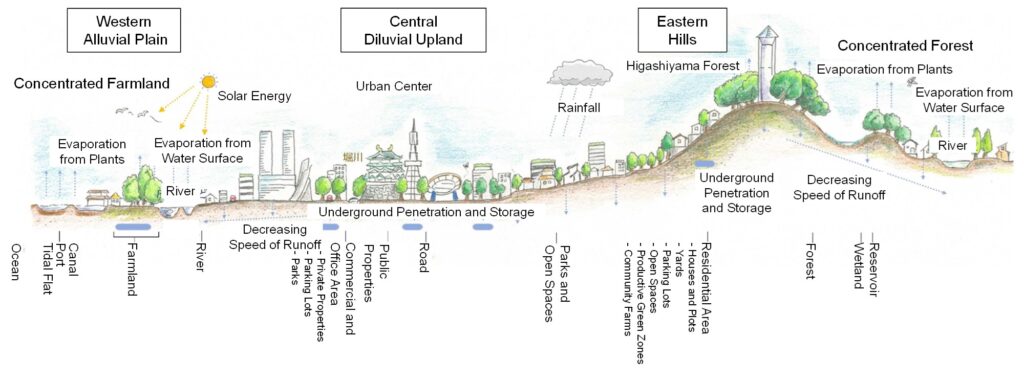Sub-theme leader
Akito Murayama (The University of Tokyo)
Outline
One of the Sustainable Development Goals (SDGs) enacted by the United Nations in 2015 is to: “Make cities and human settlements inclusive, safe, resilient and sustainable (Goal 11).” This research aims to project climate change impacts such as high temperatures and increased disasters from extreme weather on local land use and urban environments in Japan and consider sustainable regeneration policies to adapt to them. We will select case studies at a city/district/block scale from all over Japan, and develop quantitative models for predicting climate change impacts based on spatial simulations. The final purpose of this study is to generalize the policy-making processes for climate change adaptation and build a methodology for implementing them in urban and neighborhood development.

Goals
- Modeling of climate change impacts on local land use and the urban environment.
- Development of climate change adaptation scenarios from the perspective of urban planning.
- Generalization of policy-making processes and proposal of an implementation method in urban development.
Target items
- Collection of public statistical information, including Basic City Planning Survey.
- Understanding of city and community cases with advanced efforts in climate change adaptation.
- Spatial analysis using Geographic Information System (GIS) and Computational Fluid Dynamics (CFD).
Adaptation options
- Heatwaves: installation of green infrastructure, change of land and building cover, and improvement of building performance
- Floods: provision of rainwater pipes and rainwater storage facilities, installation of reservoirs, installation of green and blue infrastructure, urban structure transformation, and architectural adaptation.
- Sediment disaster: sediment control and urban structure transformation.
- Wind hazards: avoiding building layouts that promote strong winds.
- Energy consumption: introduction of a smart grid, improvement of building performance.
- Biodiversity: installation of green infrastructure and ecosystem monitoring.
- Infectious diseases: securing physical distance by open space, road space redistribution, and prioritizing pedestrians and bike users.
